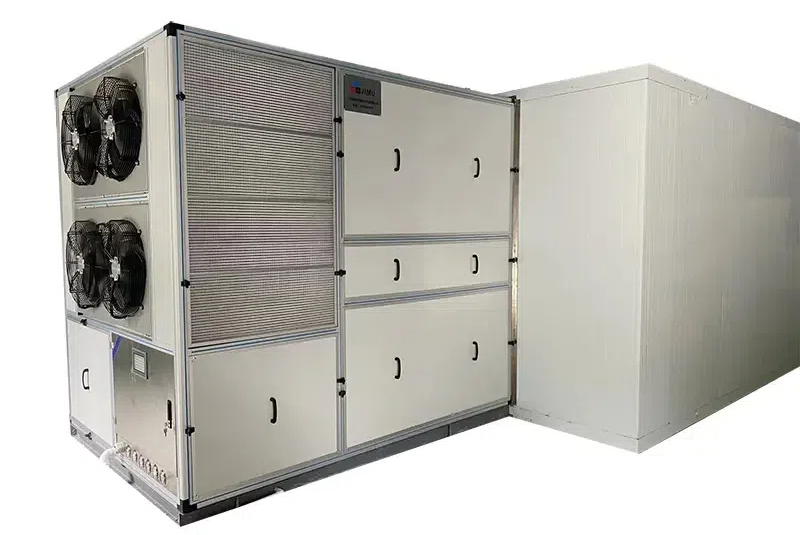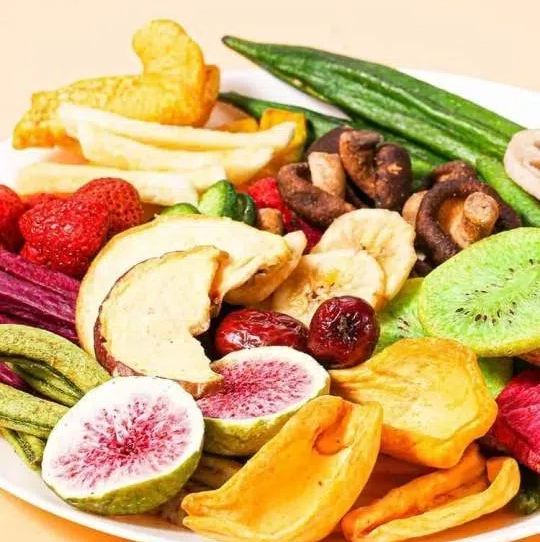Penetration type dryer machines are gaining popularity in the food industry due to their efficiency and cost-effectiveness. These dryers utilize advanced technology to penetrate heat deeply into the food materials, ensuring uniform drying with minimal energy consumption. In this article, we will explore the benefits of penetration type dryer machines, their applications, and how they can enhance food drying processes.

Introduction to Penetration Type Dryer Machines
Penetration type dryers are designed to efficiently dry food products by using a controlled environment that allows for precise temperature and humidity management. Unlike traditional dryers, these machines use less energy while maintaining high-quality drying results. They are particularly beneficial for food manufacturers looking to reduce operational costs without compromising product quality.
Key Features of Penetration Type Dryer Machines
1. Energy Efficiency: These dryers use significantly less electricity compared to traditional models, making them an environmentally friendly option. For instance, some models use only 25% of the electricity required by conventional dryers.
2. Adjustable Temperature: The temperature can be adjusted from 18°C to 80°C, allowing for both hot and cool drying processes. This flexibility is crucial for different types of food products that require specific drying conditions.
3. Uniform Drying: The penetration technology ensures that heat is evenly distributed throughout the material, preventing hot spots and ensuring consistent drying results.
Applications in Food Industry
Penetration type dryer machines are versatile and can be used for a variety of food products, including fruits, vegetables, herbs, and even meat products. They are ideal for drying sensitive foods that require precise temperature control to preserve their nutritional value and texture.
Example: Drying Fruits
Drying fruits like strawberries or blueberries requires careful temperature control to maintain their flavor and nutritional content. Penetration type dryers can achieve this by providing a consistent drying environment that prevents over-drying or under-drying.
Example: Drying Herbs
Herbs are delicate and require gentle drying to preserve their aroma and flavor. Penetration type dryers are well-suited for this task, as they can dry herbs at low temperatures, ensuring that their essential oils are retained.

Benefits of Penetration Type Dryer Machines
1. Energy Savings
One of the most significant advantages of penetration type dryers is their energy efficiency. By using less electricity, these machines help reduce operational costs and minimize environmental impact.
2. Improved Product Quality
The controlled drying environment ensures that food products are dried uniformly, which helps maintain their texture and flavor. This is particularly important for products that are sensitive to heat or moisture.
3. Flexibility
These dryers offer adjustable temperature settings, allowing them to be used for a wide range of food products. Whether it's drying fruits, vegetables, or meats, the temperature can be tailored to meet specific drying requirements.
4. Environmental Benefits
By reducing energy consumption, penetration type dryers contribute to lower greenhouse gas emissions, making them a more sustainable option for food manufacturers.
5. Reduced Maintenance
Penetration type dryers often have fewer moving parts compared to traditional dryers, which means they require less maintenance over time. This reduces downtime and ensures continuous production.
Comparison with Other Drying Technologies
Direct vs. Indirect Drying
1. Direct Drying: Uses hot air or gas to directly contact the material, providing efficient heat transfer but potentially higher operating costs.
2. Indirect Drying: Keeps the heat source separate from the material, reducing contamination risks but often requiring more complex setups.
Radiant Drying
Uses electromagnetic waves to heat materials without direct contact, minimizing airflow and reducing contamination risks. This method is often used for drying coatings and adhesives.
Freeze-Drying
A method that involves freezing the material and then reducing the surrounding pressure to allow frozen water to sublimate directly into vapor. This method is ideal for preserving nutrients and flavor but can be more expensive.
Advanced Features and Innovations
Penetration type dryers are continuously evolving with advancements in technology. Some models now incorporate smart sensors that monitor moisture levels and adjust drying times automatically, ensuring optimal drying conditions. Additionally, some dryers are designed with modular components, allowing for easy upgrades and customization based on specific production needs.
Modular Design
Allows for easy expansion or modification of the dryer system. This is particularly useful for small-scale producers who may need to adapt their equipment as their business grows.
Smart Sensors
These sensors can detect moisture levels in real-time, automatically adjusting the drying process to ensure that products are dried to the perfect level. This reduces waste and improves product consistency.
Case Studies and Success Stories
Several food manufacturers have successfully integrated penetration type dryers into their production lines, achieving significant cost savings and improvements in product quality. For example, a fruit drying company in Europe reported a 30% reduction in energy costs after switching to penetration type dryers, while also improving the texture and flavor of their dried fruits.
Example: Fruit Drying Company
This company was able to reduce their energy consumption by 30% while maintaining high-quality dried fruit products. The uniform drying provided by the penetration type dryers also helped in reducing product waste.
Conclusion
Penetration type dryer machines offer a compelling solution for food manufacturers seeking efficient, cost-effective drying solutions. Their ability to provide uniform drying with minimal energy consumption makes them an attractive option for a variety of food products. As the demand for sustainable and efficient food processing technologies continues to grow, penetration type dryers are poised to play a significant role in the industry.

Frequently Asked Questions
1. What are the primary benefits of using penetration type dryer machines?
Penetration type dryers offer energy efficiency, improved product quality due to uniform drying, and flexibility in temperature control. These benefits make them ideal for food manufacturers looking to reduce costs and enhance product quality.
2. How do penetration type dryers compare to traditional drying methods?
Penetration type dryers use significantly less energy than traditional dryers, making them more environmentally friendly and cost-effective. They also provide more precise temperature control, which is crucial for sensitive food products.
3. Can penetration type dryers be used for drying different types of food products?
Yes, penetration type dryers are versatile and can be used for a variety of food products, including fruits, vegetables, herbs, and meats. Their adjustable temperature settings allow for customization based on the specific drying requirements of each product.
4. What environmental benefits do penetration type dryers offer?
By reducing energy consumption, penetration type dryers contribute to lower greenhouse gas emissions, making them a more sustainable option for food manufacturers. This aligns with global efforts to reduce environmental impact through more efficient technologies.
5. How do penetration type dryers ensure uniform drying?
Penetration type dryers use advanced technology to penetrate heat deeply and evenly into the food materials. This ensures that all parts of the product are dried consistently, preventing hot spots and under-drying.
Citations:
[1] https://www.iqsdirectory.com/articles/dryer/types-of-dryers.html
[2] https://patents.google.com/patent/CN110207480A/zh
[3] https://www.love2laundry.nl/blog/what-is-a-steam-dryer/
[4] https://patents.google.com/patent/WO2022068971A1/zh
[5] https://www.dryeratech.com/penetration-type-dryer-machine.html
[6] https://patents.google.com/patent/CN109252340A/zh
[7] https://www.dryeratech.com/the-environmental-benefits-of-using-a-hang-type-dryer.html
[8] https://patents.google.com/patent/CN1405396A/zh











